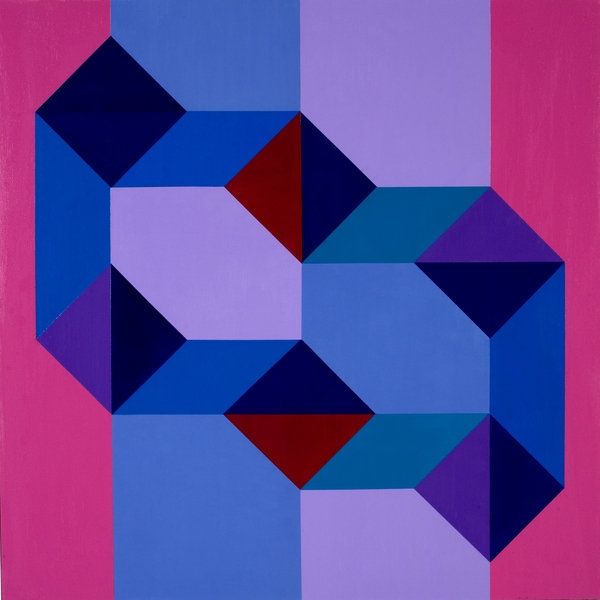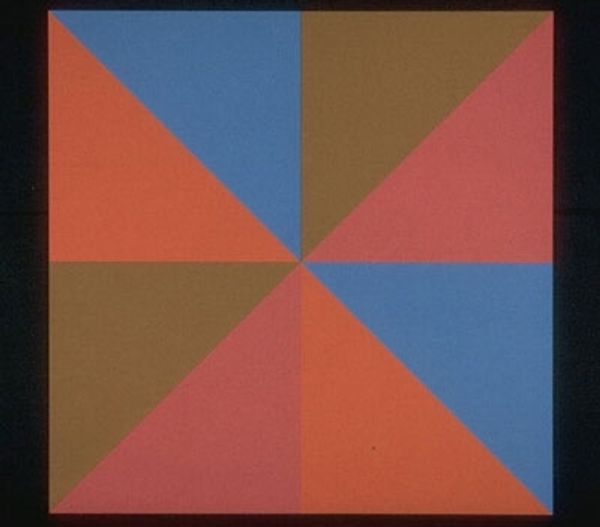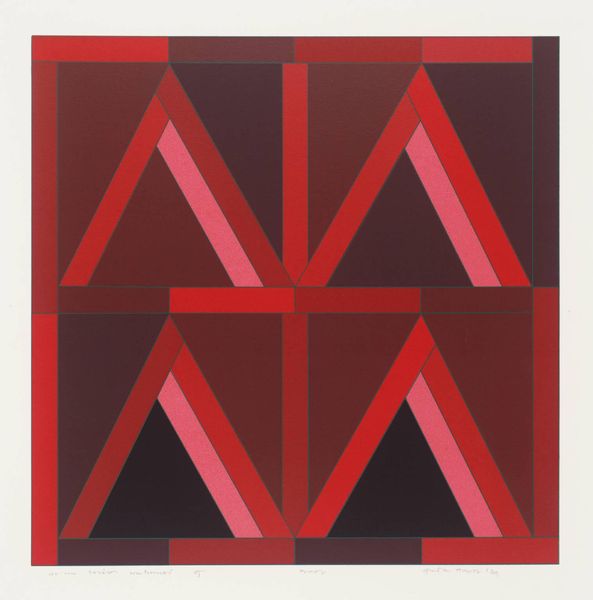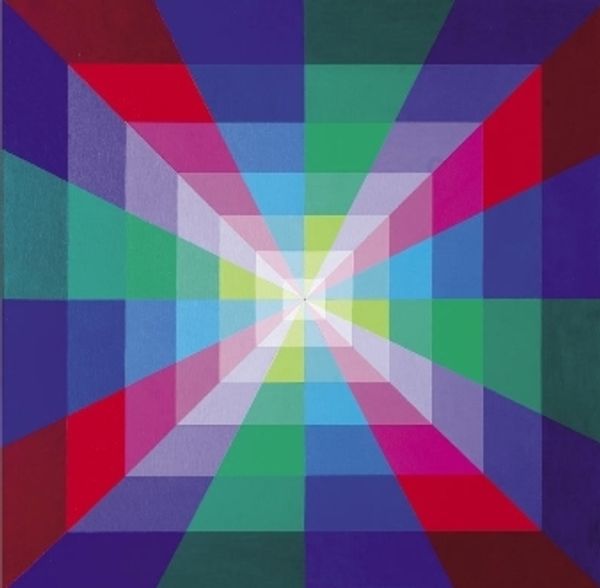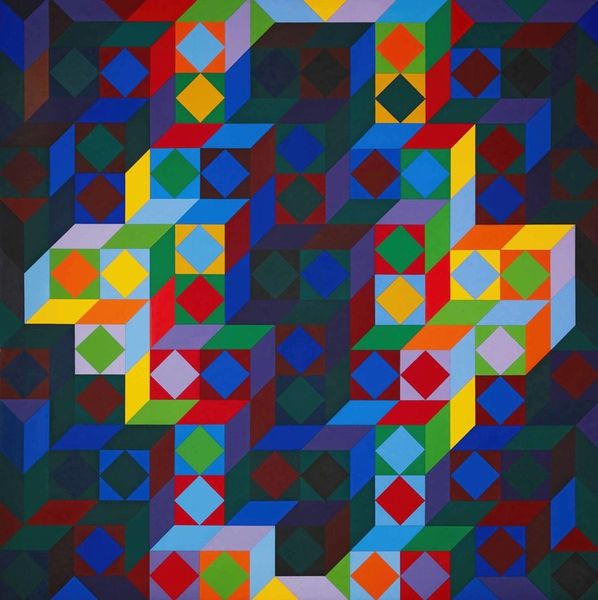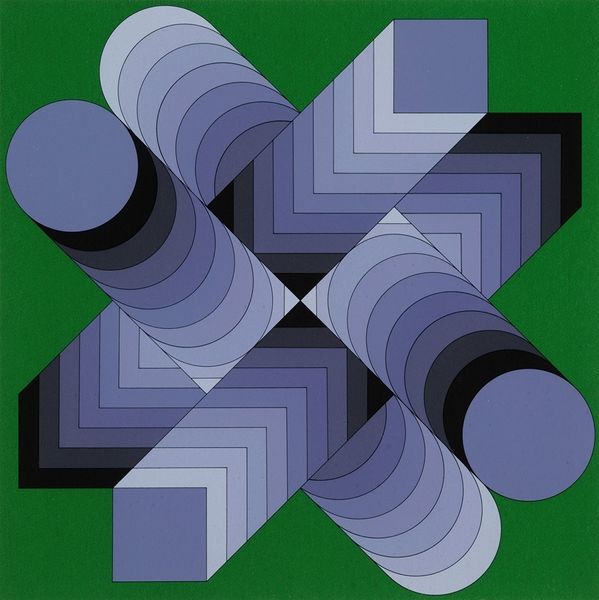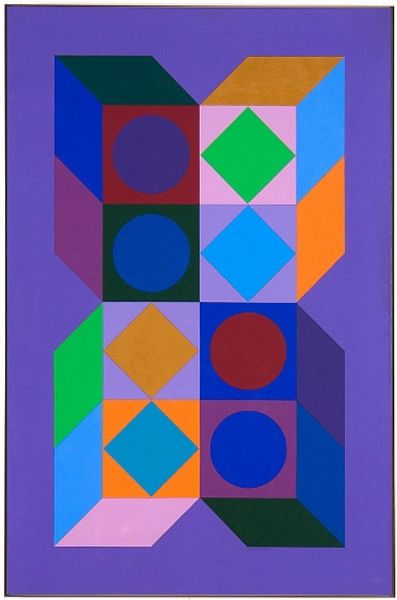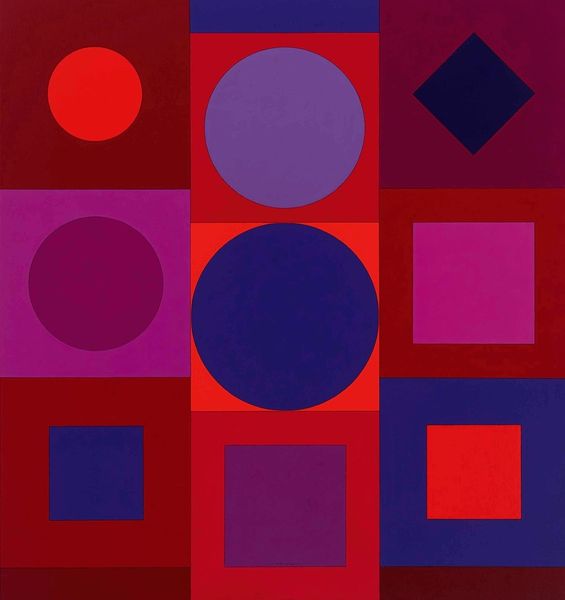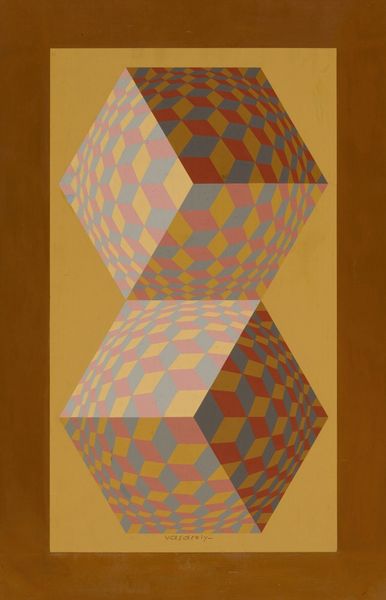
acrylic-paint
#
pattern heavy
#
op-art
#
loose pattern
#
postmodernism
#
acrylic-paint
#
abstract
#
geometric pattern
#
abstract pattern
#
minimal pattern
#
geometric-abstraction
#
repetition of pattern
#
vertical pattern
#
abstraction
#
pattern repetition
#
layered pattern
#
combined pattern
Copyright: Modern Artists: Artvee
Editor: So, this is Victor Vasarely's "PELDA" created with acrylic paint between 1972 and 1976. I find the interlocking geometric shapes oddly mesmerizing, almost like staring into a complex puzzle. What's your take? How do you interpret this work within its historical context? Curator: Well, viewing "PELDA" through a historical lens, it is fascinating to see it emerge from a period deeply engaged with social and political upheaval. Vasarely’s Op Art, seemingly detached and purely abstract, needs to be understood against the backdrop of consumer culture. Do you think this abstraction actually serves a purpose? Editor: I hadn’t thought of it that way. I suppose the vibrant, mass-producible nature of acrylics makes the artwork inherently connected to consumerism. Are you suggesting that Vasarely's geometric abstraction is less about pure aesthetics and more about reflecting, or even critiquing, societal structures? Curator: Precisely. While appearing detached, Op Art became embedded within advertising and design. How might its adoption in commercial spheres affect our perception of its artistic value? Does it enhance it by making art accessible or diminish it by association with consumerism? Editor: That's a great point. The ubiquity of these patterns probably changed how people saw it then, and even now. It’s like the art infiltrated daily life. I suppose the lines between high art and popular culture became really blurred. Curator: Exactly. Considering its historical context makes "PELDA" a great reflection on the society in which it was created, sparking critical thinking about the role of art in public life. Editor: I'll definitely think differently about Vasarely now. I came expecting pure abstraction, and I leave considering questions of politics, social commentary and how we use imagery!
Comments
No comments
Be the first to comment and join the conversation on the ultimate creative platform.
